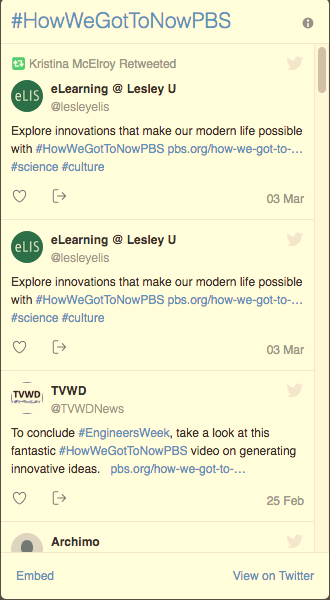How Change Happens
The following book excerpt is from How We Got to Now: Six Innovations That Made the Modern World by Steven Johnson. Text used with permission.

Most of us in the developed world don’t pause to think how amazing it is that we drink water from a tap and never once worry about dying forty-eight hours later from cholera. Thanks to air-conditioning, many of us live comfortably in climates that would have been intolerable just fifty years ago. Our lives are surrounded and supported by a whole class of objects that are enchanted with the ideas and creativity of thousands of people who came before us: inventors and hobbyists and reformers who steadily hacked away at the problem of making artificial light or clean drinking water so that we can enjoy those luxuries today without a second thought, without even thinking of them as luxuries in the first place.
These innovations have set in motion a much wider array of changes in society than you might reasonably expect. Innovations usually begin life with an attempt to solve a specific problem, but once they get into circulation, they end up triggering other changes that would have been extremely difficult to predict. This is a pattern of change that appears constantly in evolutionary history. Think of the act of pollination: sometime during the Cretaceous age, flowers began to evolve colors and scents that signaled the presence of pollen to insects, who simultaneously evolved complex equipment to extract the pollen and, inadvertently, fertilize other flowers with pollen. Over time, the flowers supplemented the pollen with even more energy-rich nectar to lure the insects into the rituals of pollination. Bees and other insects evolved the sensory tools to see and be drawn to flowers, just as the flowers evolved the properties that attract bees. This is a different kind of survival of the fittest, not the usual zero-sum competitive story that we often hear in watered-down versions of Darwinism, but something more symbiotic: the insects and flowers succeed because they, physically, fit well with each other. (The technical term for this is coevolution.) The importance of this relationship was not lost on Charles Darwin, who followed up the publication of On the Origin of Species with an entire book on orchid pollination.
These coevolutionary interactions often lead to transformations in organisms that would seem to have no immediate connection to the original species. The symbiosis between flowering plants and insects that led to the production of nectar ultimately created an opportunity for much larger organisms—the hummingbirds—to extract nectar from plants, though to do that they evolved an extremely unusual form of flight mechanics that enables them to hover alongside the f lower in a way that few birds can even come close to doing. Insects can stabilize themselves midflight because they have fundamental flexibility to their anatomy that vertebrates lack. Yet despite the restrictions placed on them by their skeletal structure, hummingbirds evolved a novel way of rotating their wings, giving power to the upstroke as well as the downstroke, enabling them to float midair while extracting nectar from a flower.
These are the strange leaps that evolution makes constantly: the sexual reproduction strategies of plants end up shaping the design of a hummingbird’s wings. Had there been naturalists around to observe the insects first evolving pollination behavior alongside the f lowering plants, they would have logically assumed that this strange new ritual had nothing to do with avian life. And yet it ended up precipitating one of the most astonishing physical trans- formations in the evolutionary history of birds.
The history of ideas and innovation unfolds the same way. Johannes Gutenberg’s printing press created a surge in demand for spectacles, as the new practice of reading made Europeans across the continent suddenly realize that they were farsighted; the market demand for spectacles encouraged a growing number of people to produce and experiment with lenses, which led to the invention of the microscope, which shortly thereafter enabled us to perceive that our bodies were made up of microscopic cells.
You wouldn’t think that printing technology would have anything to do with the expansion of our vision down to the cellular scale, just as you wouldn’t have thought that the evolution of pollen would alter the design of a hummingbird’s wing. But that is the way change happens.


